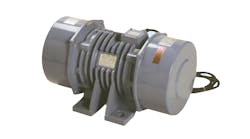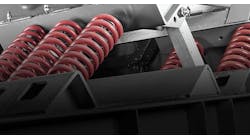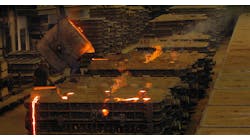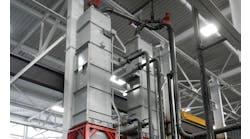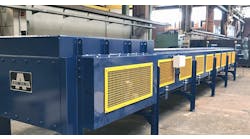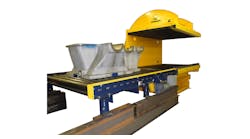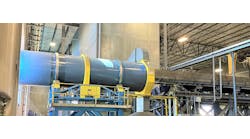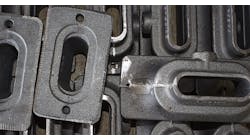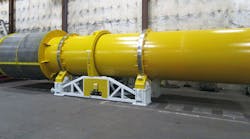Latest from Shakeout
FM&T's 2024 Guide to Exhibitors
Rotary-Electric Vibrators and Drives
New Execs for General Kinematics
Staying Safe from Dangerous Dust
What’s Next for Controlling RCS?
Cleaning and Sorting Conveyor
Simplifying Mold and Casting Rollover
Sprue Cleaning, Crushing Means Savings
Casting Coolers vs. Quench Conveyors
Construction is proceeding toward a 2020 start-up for Scania AB’s est.$178-million greenfield foundry near Södertälje, Sweden, where it intends to triple its output of diesel engine blocks and cylinder heads for commercial vehicles to 90,000-mtpy, with about 50% lower energy consumption and improved environmental impact over the century-old foundry it will replace.
"A completely new plant is the most cost-efficient solution and the best alternative from an environmental and quality standpoint when it comes to the future supply of strategically important parts for our engine production,” stated Ruthger de Vries, executive vice president and head of Production and Logistics at Scania, when the new foundry was announced in 2017. Two of the equipment contractors to the project have detailed their contributions:
• In December, DIDION International will deliver a DIDION® Rotary Sand Reclaimer that crushes, scrubs, screens, and classifies large, chemically bonded lumps down to grain size while separating tramp metal and debris. Additional system benefits are easy installation, a simple, smooth drive system, rugged and reliable performance, and low maintenance costs, according to the developer.
• The new foundry also will incorporate an Omega Sinto RSR Rotary Sand Reclaimer to process 16 mt/hour of spent green sand and return it for cold-box coremaking, the result of a “a multi-million Euro contract.” While standard green-sand reclamation involves pneumatic sand impingement on a steel target, followed by a thermal reclaimer, a cooler/classifier (and possibly an additional mechanical reclamation treatment), the Sinto system uses the sand or ceramic media’s natural scrubbing action in combination with high-speed ceramic rollers to remove clay, carbon, and other contaminates that are detrimental to coremaking. According to the developer, the effective and efficient system is also less capital-intensive, without the permitting and high-operating cost of a thermal reclaimer.
Earlier this year SinterCast AB announced that Scania will adopt its System 4000 Plus process control system, the first installation for the fourth generation of the technology for producing compacted-graphite iron. SinterCast estimated the initial value of the project $550,000. Scania has been producing CGI using SinterCast technology at the existing Södertälje foundry since 2013.
The present foundry was established in 1914 and is situated near the city in western Sweden, while the new plant will be built outside the city at an industrial estate. The capital investment is reportedly one of the largest the manufacturer has made to date, following a comprehensive review of alternative plans, including remodeling the vintage foundry and sourcing its casting requirements from third-party producers.

